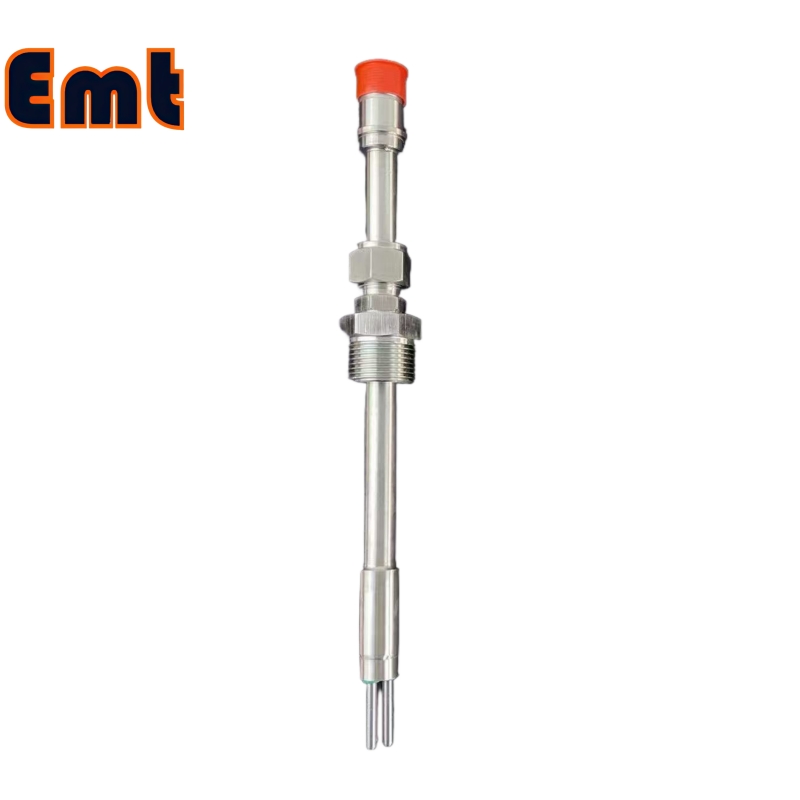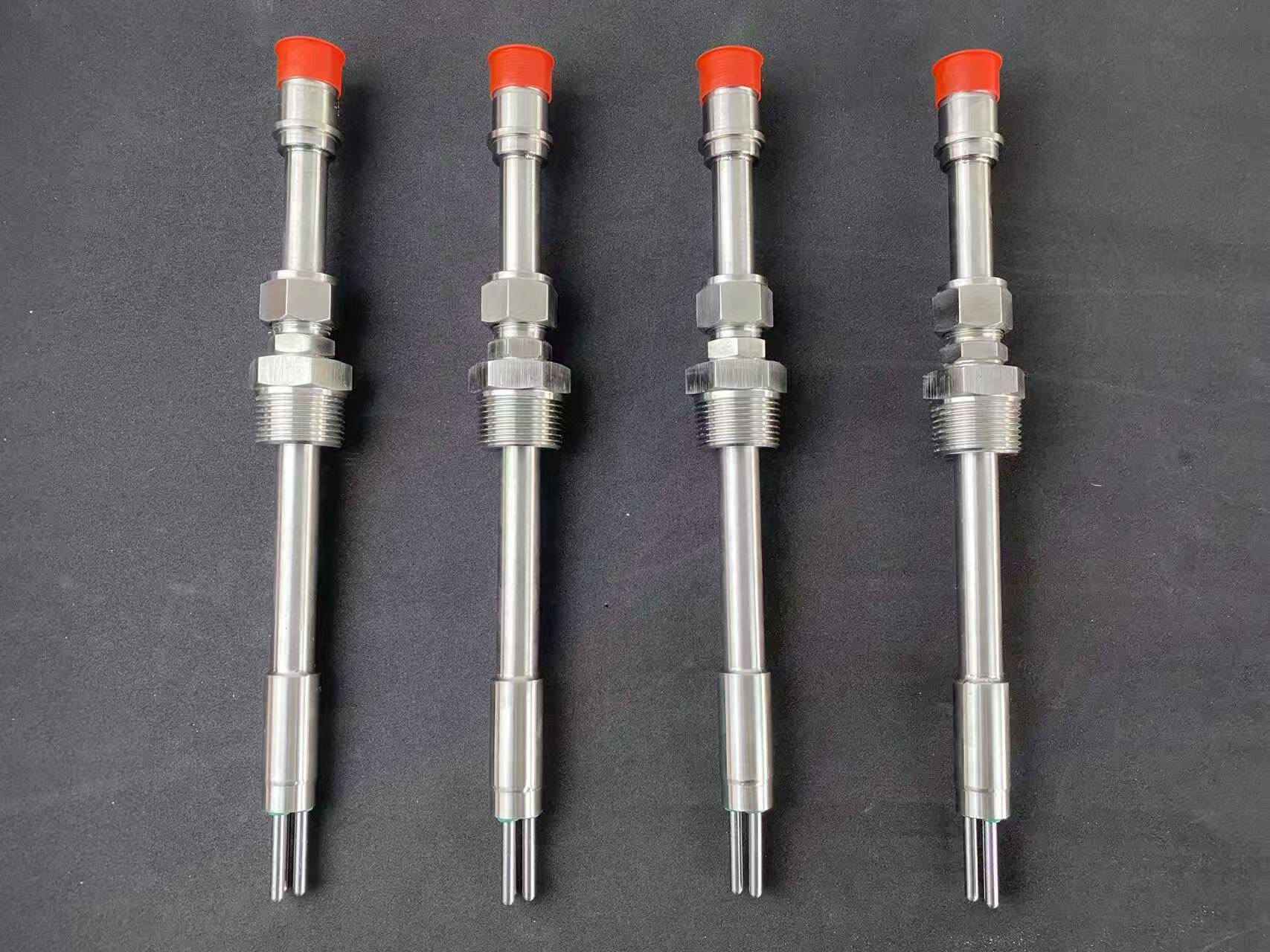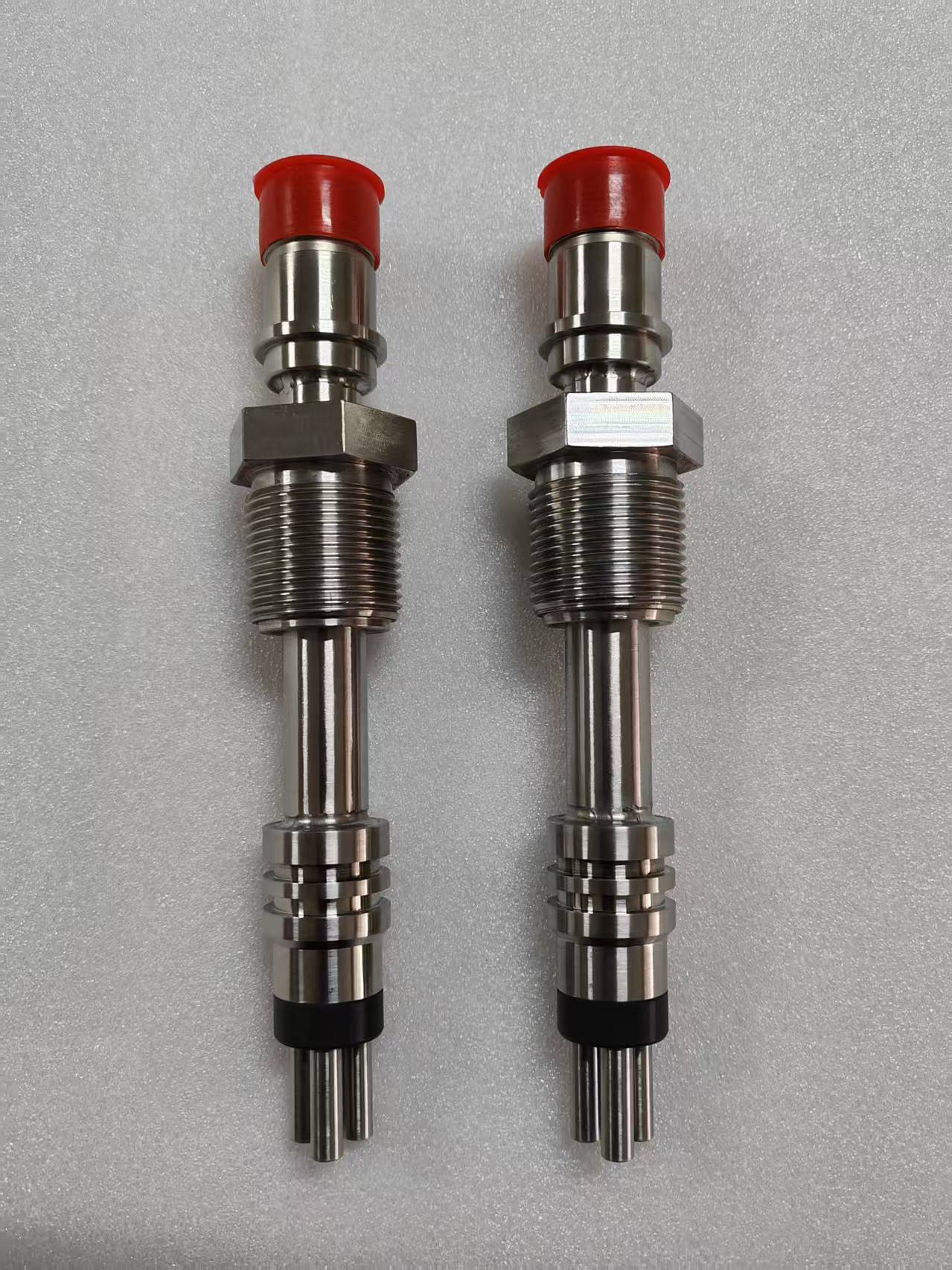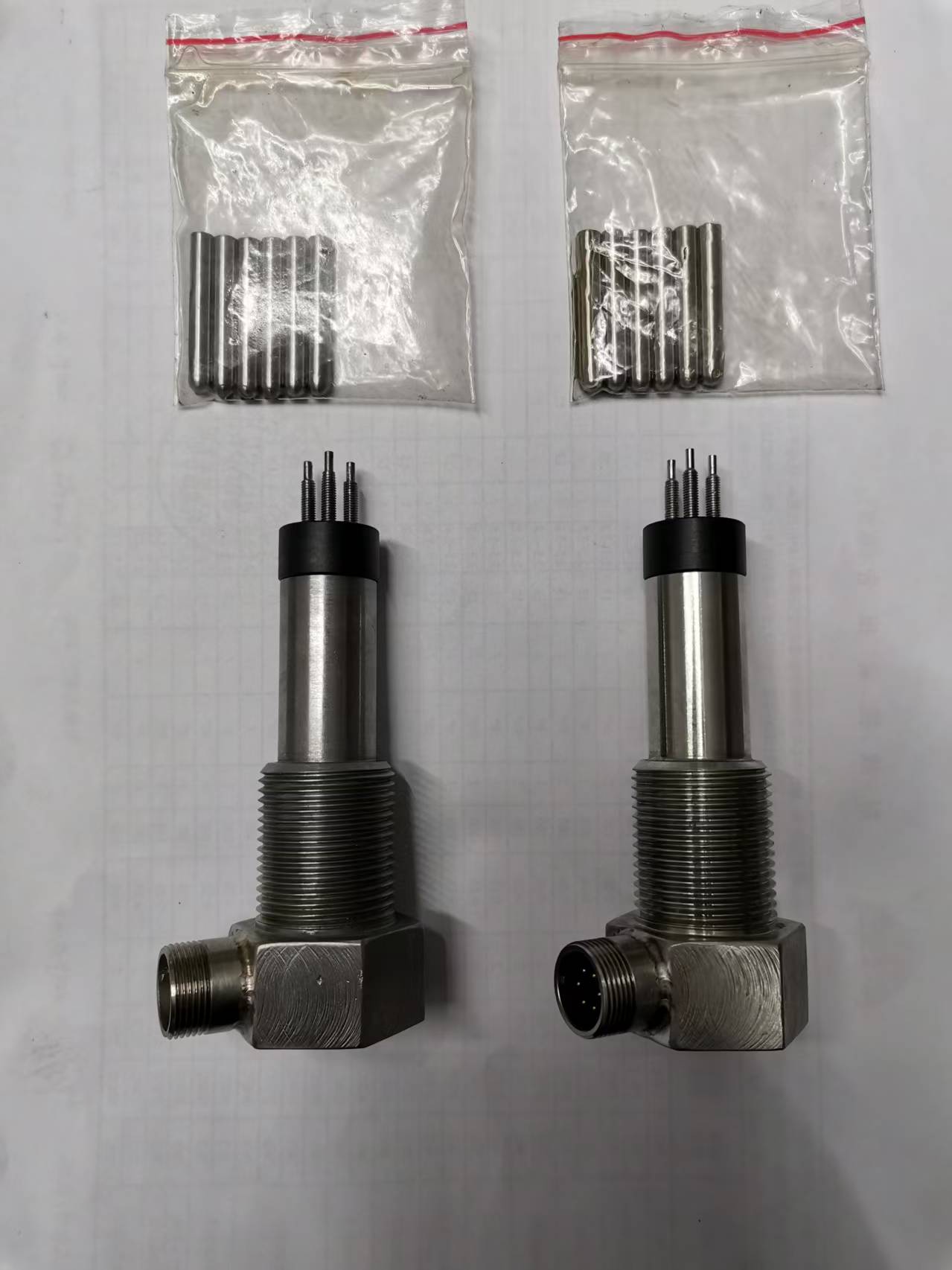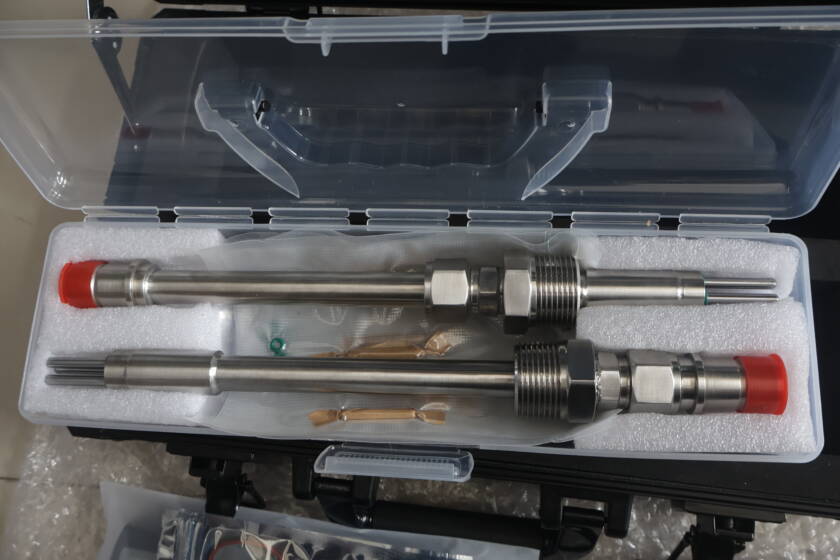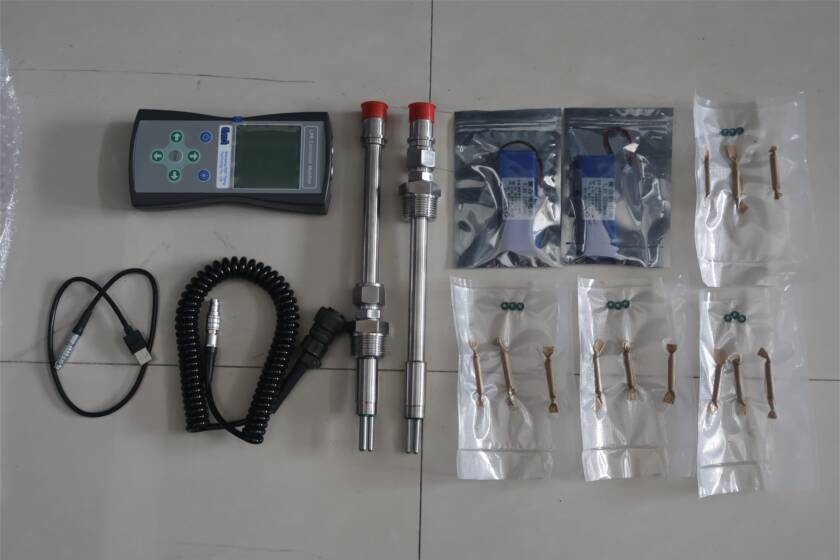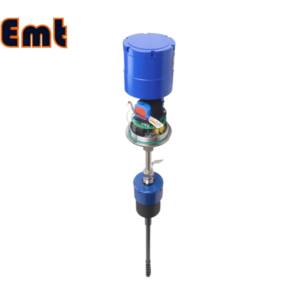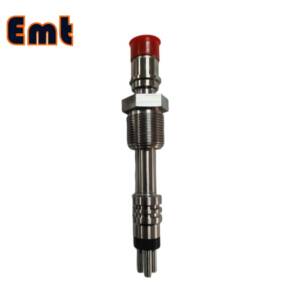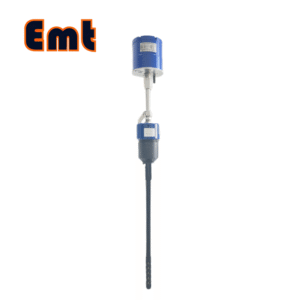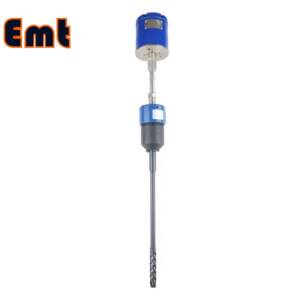Description
The EMT LPR Corrosion Probe is an advanced electrochemical device designed to monitor corrosion rates in various industrial applications, including piping systems and cooling towers exposed to conductive water flow. By utilizing LPR technology, these sensors provide precise measurements of corrosion rates, enabling effective corrosion control and management.
1. Key Features
The EMT LPR Corrosion Probe is equipped with a range of advanced features designed to provide accurate and reliable monitoring of corrosion rates in various applications. Here’s a detailed overview of its key features:
1) Robust 4-Wire Design
The reliable 4-wire configuration of the EMT LPR Corrosion Probe minimizes the impact of wiring resistance on measurement accuracy. This design ensures that:
- Enhanced Signal Integrity: By separating the current-carrying and voltage-sensing wires, the probe can deliver more precise readings, reducing noise and interference.
- Improved Measurement Consistency: The 4-wire setup enables stable and repeatable measurements, crucial for monitoring corrosion over time and making informed decisions.
2) Corrosion Rate and Imbalance Monitoring
The probe continuously tracks corrosion rates and detects any imbalances in the system. This feature allows for:
- Proactive Maintenance: Early detection of corrosion trends enables operators to implement timely interventions, preventing significant damage and costly repairs.
- Infrastructure Protection: Continuous monitoring helps maintain the integrity of critical infrastructure, ensuring that systems remain safe and operational.
3) Dual Corrosion Sensor Input
The dual sensor input board allows for simultaneous measurement of corrosion rates for two different metal types. This capability provides:
- Comprehensive Monitoring: Operators can assess corrosion behavior across various materials used in the system, enabling targeted maintenance strategies.
- Enhanced Flexibility: Adaptable to diverse applications, the dual input feature is particularly beneficial in complex systems with multiple metal components.
4) Automatic Conductivity Measurement
The sensors automatically measure the conductivity of the water being monitored. This feature ensures that:
- Accurate Readings: The probe compensates for variations in conductivity during each measurement cycle, resulting in more reliable corrosion rate assessments.
- Real-Time Adjustments: Automatic adjustments help maintain consistent monitoring under changing conditions, enhancing overall system performance.
5) Control Delay Feature
The initial stabilization time feature delays control actions until the sensor readings stabilize. This functionality offers:
- Improved Accuracy: By ensuring that only reliable data is used for decision-making, the control delay feature enhances the precision of corrosion assessments.
- Reduced False Alarms: This capability minimizes the likelihood of reacting to transient conditions, leading to more effective corrosion management.
6) Automatic Electrode Replacement Reminder
The system includes reminders for electrode replacement, which ensures:
- Optimal Performance. Regular reminders help maintain the accuracy and reliability of the sensors, preventing unexpected failures.
- Longer Sensor Lifespan. By prompting timely replacements, this feature contributes to the prolonged functionality of the probes.
7) Self-Diagnostic Capabilities
The LPR Corrosion Probe is equipped with self-diagnostic features, which provide:
- Simplified Maintenance. The ability to self-diagnose issues eliminates the need for external test probe simulators, making maintenance more straightforward and less time-consuming.
- Enhanced Reliability. Continuous self-monitoring ensures that any potential issues are identified and addressed promptly, maintaining the system’s integrity.
8) Disturbance Control Algorithms
The advanced disturbance control algorithms dynamically adjust the concentration of corrosion inhibitors based on real-time corrosion signals. Key aspects include:
- Adaptive Inhibitor Management. If corrosion rates increase, the system automatically raises the target parts per million (PPM) for inhibitors, ensuring effective corrosion control.
- Optimized Chemical Usage. By adjusting inhibitor concentrations based on actual corrosion data, the system minimizes waste and reduces chemical costs, promoting both efficiency and environmental sustainability.
2. Applications of LPR Corrosion Probe
The EMT LPR Corrosion Probe is designed for a range of critical applications, leveraging its advanced electrochemical technology to ensure effective corrosion monitoring and control. Here are some key application areas in more detail:
1) Cooling Towers
Cooling towers are vital components in many industrial processes, tasked with dissipating heat from water-cooled systems. The EMT LPR Corrosion Probe plays a crucial role in:
- Performance Optimization. By continuously monitoring the corrosion rates of the metal components within the cooling system, the probe helps identify potential issues before they escalate, ensuring that the cooling tower operates at peak efficiency.
- Longevity of Equipment. Regular corrosion assessments enable timely maintenance and the application of corrosion inhibitors, which significantly extend the lifespan of cooling tower components, reducing replacement costs and downtime.
- Water Quality Management. The probe’s ability to measure conductivity and adjust chemical dosing in real-time ensures that water quality remains high, preventing scaling and fouling that can impair cooling performance.
2) Industrial Water Processing
In industrial water processing, maintaining the integrity of water systems is essential for operational efficiency and safety. The EMT LPR Corrosion Probe contributes by:
- Accurate Corrosion Assessments. The dual sensor input capability allows for the monitoring of different metals used in the system, providing detailed insights into corrosion rates and helping to identify specific areas of concern.
- System Integrity Maintenance. By providing real-time data on corrosion rates, the probe aids in the proactive management of water processing systems, ensuring that they remain safe and effective.
- Cost-Effective Solutions. The accurate monitoring capabilities help optimize the use of corrosion inhibitors, leading to reduced chemical costs and less environmental impact.
3) Domestic Water Treatment
In domestic water treatment systems, ensuring safe and clean water is paramount. The EMT LPR Corrosion Probe supports this goal by:
- Enhancing Water Quality Management. By monitoring corrosion rates in pipes and treatment equipment, the probe helps prevent the leaching of harmful metals into the water supply, ensuring compliance with health standards.
- Efficient Control of Corrosion Inhibitors. Automated adjustments in inhibitor dosing based on real-time corrosion data help maintain optimal water quality while minimizing chemical usage.
- Improving System Reliability. Continuous monitoring and self-diagnostic features ensure that any issues are detected early, allowing for prompt maintenance and minimizing service interruptions.


